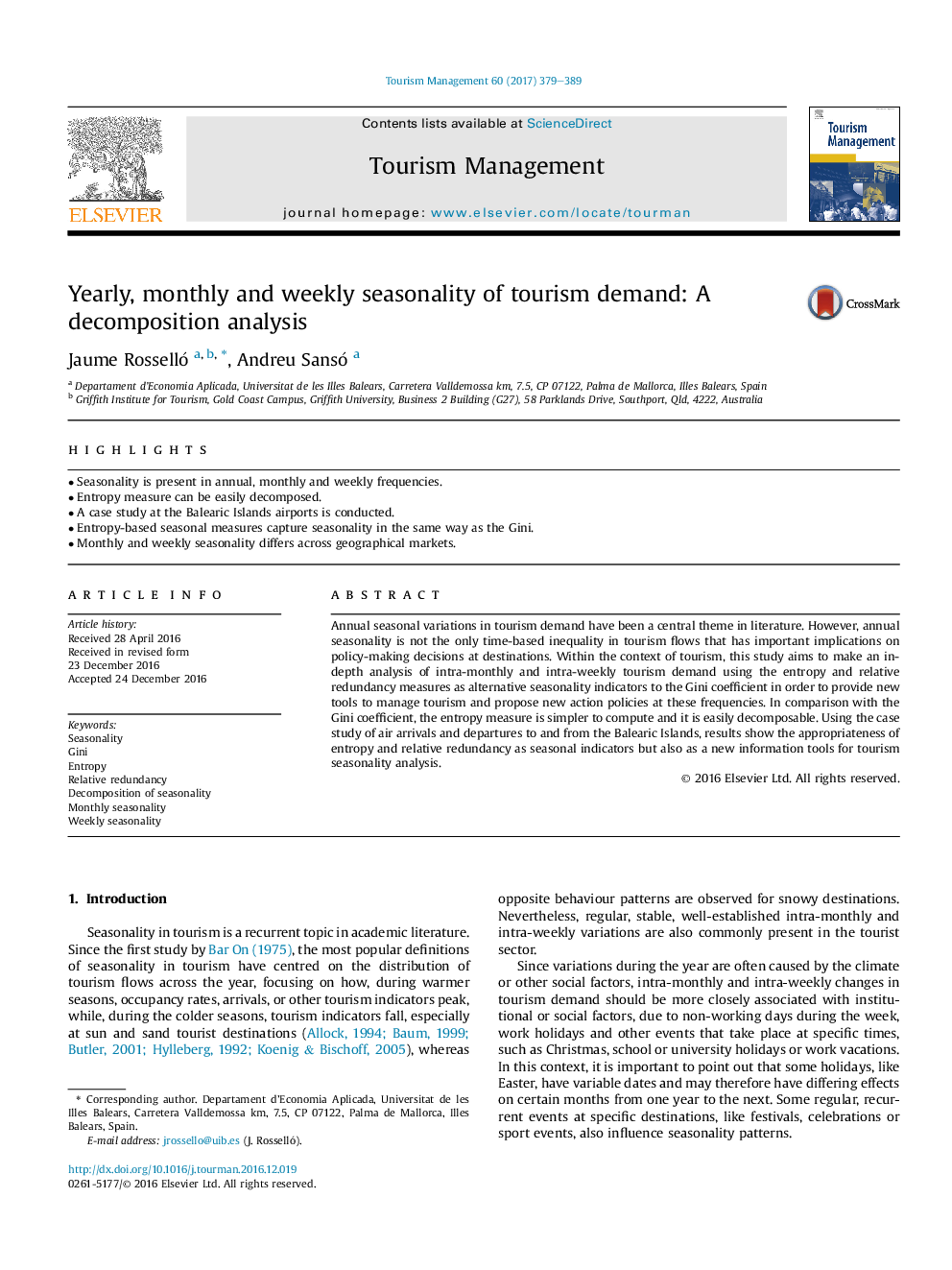| Article ID | Journal | Published Year | Pages | File Type |
|---|---|---|---|---|
| 5108683 | Tourism Management | 2017 | 11 Pages |
Abstract
Annual seasonal variations in tourism demand have been a central theme in literature. However, annual seasonality is not the only time-based inequality in tourism flows that has important implications on policy-making decisions at destinations. Within the context of tourism, this study aims to make an in-depth analysis of intra-monthly and intra-weekly tourism demand using the entropy and relative redundancy measures as alternative seasonality indicators to the Gini coefficient in order to provide new tools to manage tourism and propose new action policies at these frequencies. In comparison with the Gini coefficient, the entropy measure is simpler to compute and it is easily decomposable. Using the case study of air arrivals and departures to and from the Balearic Islands, results show the appropriateness of entropy and relative redundancy as seasonal indicators but also as a new information tools for tourism seasonality analysis.
Keywords
Related Topics
Social Sciences and Humanities
Business, Management and Accounting
Strategy and Management
Authors
Jaume Rosselló, Andreu Sansó,
